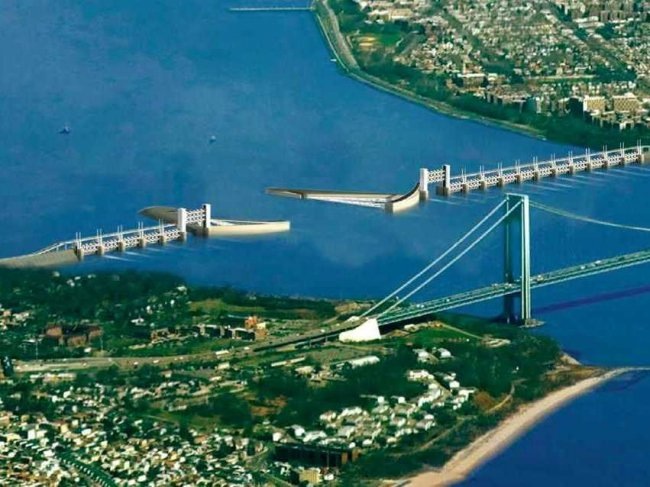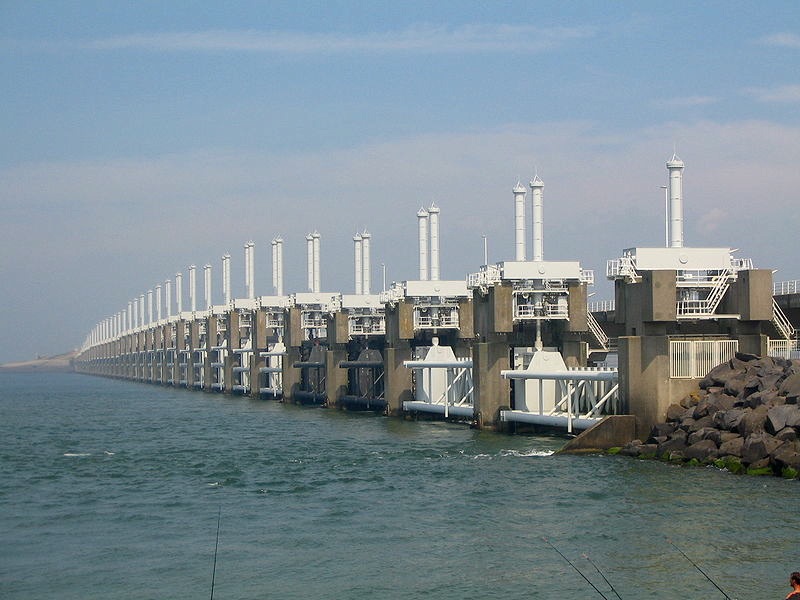Featured Stories, MIT | December 2, 2012
Engineering Hurricane Barriers of the Future: Three Questions with MIT’s Chiang C. Mei
Oceans at MIT’s Genevieve Wanucha sat down with Chiang C. Mei, Ford Professor Emeritus of Engineering in MIT’s Dept. of Civil & Environmental Engineering to ask for his perspective on the possibility of storm surge barriers on our East Coast. He is well known for his contributions in fluid mechanics with applications to coastal engineering. In fact, Mei has worked on barrier systems since 1984 when construction of MOSE in Venice began. His personal knowledge of the engineering challenges inherent to sea barriers allows him to offer guidance to U.S. engineers, even some concrete suggestions for protecting the New York area.
Q 1. Hurricane Sandy’s devastating blow has left citizens and government officials wondering how the area will fare in future storms. Climate scientists predict that a warming planet will bring fewer but more intense hurricanes with enough power to occasionally hit cities along the entire Eastern seaboard. Given the predictions, do you think we can protect East coast cities? What would this technology look like and how much would it cost?

From an engineering point of view, protecting New York and New Jersey from storm surges is possible. It’s also desirable because damage to New York will affect the whole country.
There have been proposals for storm surge barriers in New York City before. In 2009, engineers from Arcadis, a Dutch company, suggested building a barrier half a mile north of Verrazano Narrows Bridge at a cost of 6.5 billion. Inspired by their experience in Holland, they suggested gates that could swing open and closed; however, the bottom of the New York Harbor is not flat and wide enough for this idea to work.
Specifically, I think it’s worth considering having a large gate going from Sandy Hook, NJ to Rockaway, NY, like that proposed in 2009 by Dennis Padron and Graeme Forsythe of the Halcrow Group. Placing it there would be very effective for flood protection for the inner and outer Harbor. It would have prevented a lot of the damage to Hoboken. It is also possible to build sea walls on the land along the coast of Rockaway like they do for tsunami protection in Japan.
For some perspective on cost, consider that when the 2-kilometer-long storm barrier for Venice Lagoon, Italy was started in 1984, it was estimated to cost 2 billion US dollars and now it’s costing 4 billion Euro, probably even more by the time it’s finished. Because of the greater depth, the longer barrier in New York and New Jersey would cost much more and take ten years or longer.
Q 2. If we commit to building, e.g., barriers or sea walls, do engineers already have plans ready to implement? Or will the effort require extensive research and time?
If you build a gate, you have to consider the consequences to the land, environment, fishing, and navigation. So, I think coming up with the design will require a great deal of study beforehand.
Any future designs must fit New York harbor’s geographical conditions. This task requires comprehensive numerical modeling of the flow accounting for the bathymetry and the climate conditions, such as that being done at Stony Brook University’s Storm Surge Research Group. We also need to model how the barrier would change sediment transport and coastal morphology over the long-term. I think New York has to have some sort of commission to gather experts from different fields to confer. And, a new design needs to come from a competition.
Q 3. Of course, no project will be a win-win situation. What are the possible negative consequences of building barriers on the East Coast? Could they increase flooding elsewhere or harm coastal ecosystems?

Building any large structure across a river will disturb the natural flow, so there will always be some environmental issue. For instance, the Eastern Scheldt storm surge barrier has protected the Netherlands against many storm surges; however, even up to now, they are confronting environmental issues nobody expected.
One major reason for these issues is the fact that placing a barrier at mouth of a river reduces the cross sectional area for tidal flows. In the case of Eastern Scheldt, the tidal velocity has changed quite a bit because of the area reduction resulting in changes of the rate of sand and mud transport. New erosion and deposition patterns appear in the river upstream. Tidal phases are reduced, and marshland is reduced. All these changes affect the birds, fish, mussels, and oysters. At first people in the Netherlands didn’t anticipate these changes, but after many years, they noticed them.
Certainly, environmental impact studies must be done before the actual construction starts here.






